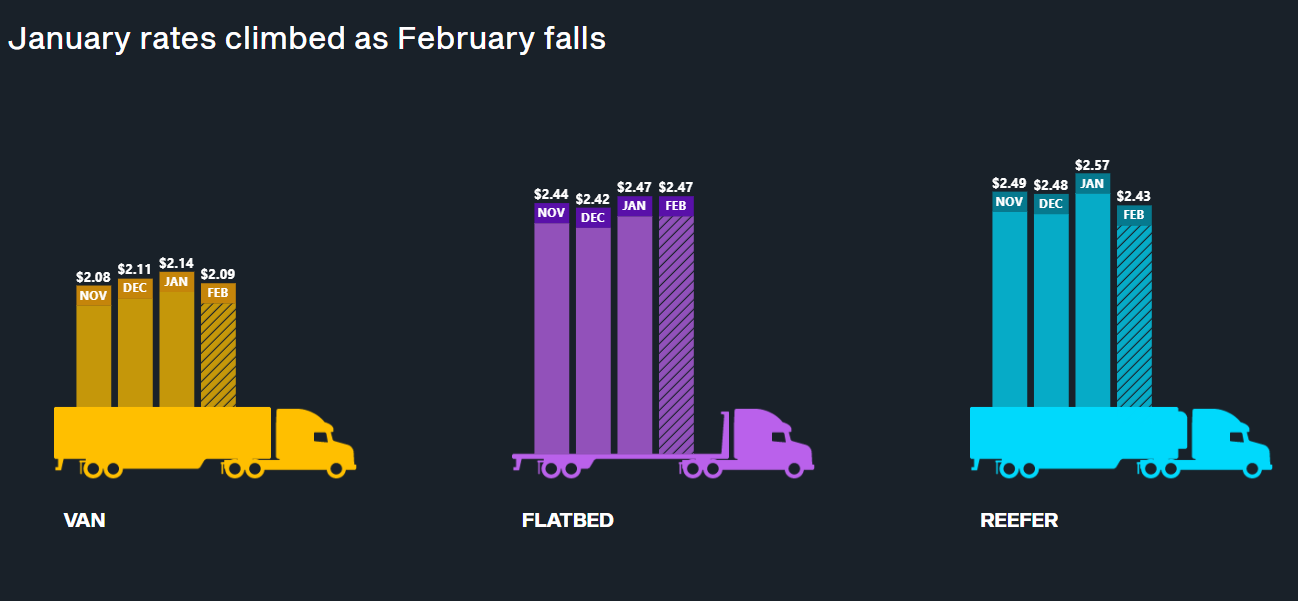Transportation Trend - February 2024
Latest Update in Transportation Trends
February 2024
Dive into a short summary of Valentine's Day logistics as TLI also encourages sharing of logistics stories. Indicators show a balance between supply and demand in truckload markets, while LTL showed slower volumes to start the year.
Valentines Day Logistics
Planned Valentine's Day spending is expected to be about $26 billion US dollars in 2024, per Statista. With this much spending in little time, how does the supply chain get the flowers in place?
At the end of January and early February, flowers are typically imported through Miami, FL from various South American countries. These flowers are then transported all over the country through Refrigerated (Reefer) trucks. About 500 temperature controlled trucks leave Miami every day to transport these flowers.
Loving Logistics
Show your love for logistics this month! TLI is encouraging all shippers to post pictures and share stories of freight with #LovingLogistics. Whether the freight was unusual, has a story behind it, or it's just something you're proud of moving. Let's show love to our work in logistics.
Less-than-Truckload
Early talks with LTL Carrier partners showed a slight decline in year-over-year volume in January, around a 4% reduction. TLI have seen carrier's on-time pickup had improved, but saw on-time delivery drop to end the year. This is a normal seasonal trend due to winter weather and holiday season.
Truckload
Spot posts jumped up 49.6% from December to January, rising rates a little in the month of January across all equipment per DAT Analytics. However, the Dry Van and Reefer rates have dropped while Flatbed remain steady to start February.
U.S. Bank suggests that the industry may possibly be seeing a bottom for excess capacity. Per a FreightWaves article, Shipments index declined more than spend index through the large freight invoice processer. This index is suggesting "the market may be moving closer to balance between supply and demand". The expected outlook is for rates to continue in favor of shippers for most of 2024.
International Shipping
In the beginning of January, a lot of focus was on the Panama Canal and the Red Sea. The Red Sea was deemed unsafe for passage due to political conflict, which made the Suez Canal unable to travel. On the other side of the globe, the Panama Canal is seeing historical droughts and causing less ships to be able to pass through. Both of these events have drastically affected international water routes and capacity as more containers are awaiting in transit. The overall effect these disruption will have is ongoing, so it’s good to keep an eye on this for international customers.
Chart of the Month
Source: DAT Freight Analytics
TLI Insights
Get the latest logistics insights and tips from Translogistics’ award-winning team. Stay ahead in transportation planning.
Questions? Email us at marketing@tli.email
Check out more Blog Posts from TLI:
Get a Quote
Customer Service
Contact Us
All Rights Reserved | TLI
Services
Support
Company
Services
Support
Company
Get a Quote
Support
Contact Us
All Rights Reserved | TLI




